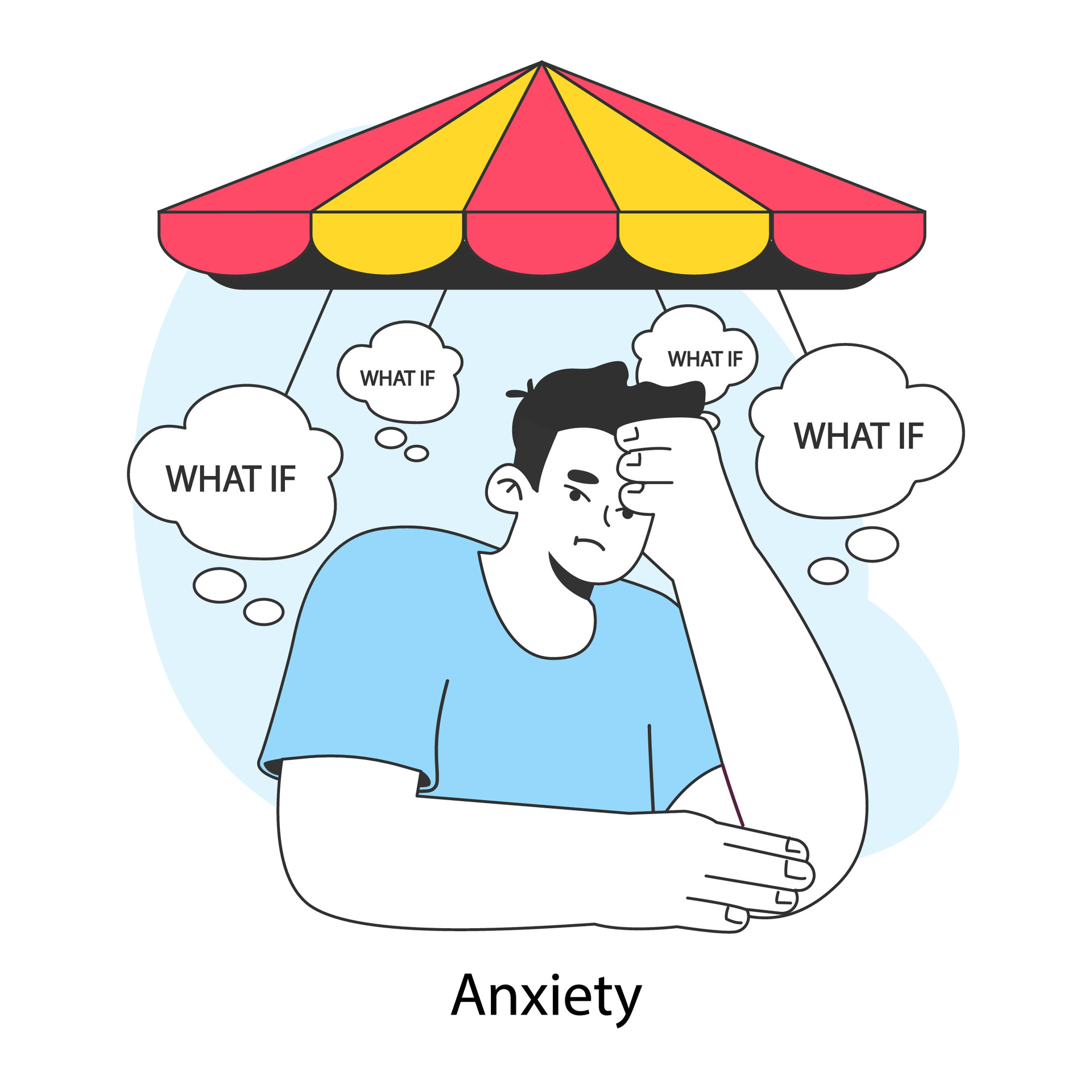
Generalized Anxiety Disorder (GAD) is a prevalent mental health problem marked by persistent and excessive concern about numerous areas of everyday living. It affects millions of individuals globally and can substantially reduce their quality of life. GAD is normally treat with a mix of psychotherapy and medicines. Pregabalin has emerged as a promising pharmacological therapeutic option. This article investigates the effectiveness, mechanism, and therapeutic implications of utilizing pregabalin 50 mg (pregabalin) to treat GAD.
Understanding General Anxiety Disorder (GAD)
GAD is a chronic disorder characterize by excessive anxiety and worry about numerous events or activities, which occur on a regular basis for at least six months. Physical symptoms commonly include restlessness, weariness, difficulty concentrating, irritability, muscular tightness, and sleep disruptions. The specific etiology of GAD is unknown, however it is thought to be a mix of genetic, environmental, and psychological variables.
Treatment Options for GAD
GAD is often treated with a combination of cognitive behavioral therapy (CBT) and medication. SSRIs, SNRIs, benzodiazepines, and buspirone are among the most often given drugs. However, these drugs have limitations, including a delayed start of action, side effects, and the possibility of dependency and withdrawal symptoms in the case of benzodiazepines.
Pregabalin: An Overview
Pregabalin, sold under the trade name Lyrica, is an anticonvulsant and anxiolytic medicine with structural similarities to the neurotransmitter gamma-aminobutyric acid (GABA). It was primarily created to treat epilepsy, but it is now license for a variety of other disorders, including neuropathic pain and fibromyalgia. Pregabalin 50 mg (pregabalin) has also demonstrated potential as a therapy for GAD.
Mechanism of Action.
Pregabalin functions by binding to the alpha-2-delta subunit of voltage-gated calcium channels in the central nervous system. This binding inhibits the release of various excitatory neurotransmitters, such as glutamate, norepinephrine, and substance P, which are implicated in the transmission of pain and anxiety signals. Pregabalin 50 mg (pregabalin) can lower neural hyperexcitability, which is common in GAD, by regulating these neurotransmitters.
Efficacy in treating GAD
Several clinical trials have looked at the efficacy of pregabalin 50 mg (pregabalin) in the treatment of GAD. A comprehensive review and meta-analysis of randomized controlled trials discovered that pregabalin effectively reduces anxiety symptoms in GAD patients. In these investigations, pregabalin was found to significantly improve anxiety levels when compared to placebo. Pregabalin has a faster start of effect than SSRIs and SNRIs, generally within the first week of medication.
Dosages and Administration
The suggested initial dose of pregabalin for GAD is usually 75 mg per day, split into two or three doses. Depending on the patient’s reaction and tolerance, the dose may be adjusted to a maximum of 600 mg per day. Pregabalin 50 mg (pregabalin) can be used as an initial low dosage to determine tolerance before progressing to greater doses.
Comparison of Other Treatments
When compared to other treatments for GAD, pregabalin has several advantages. Pregabalin, unlike benzodiazepines, is not as likely to cause dependency and withdrawal symptoms. It also has a speedier beginning of action than SSRIs and SNRIs, which might take weeks to provide complete therapeutic benefits. However, pregabalin can induce adverse effects such as dizziness, somnolence, and weight gain, which must be addressed while prescribing this medicine.
Clinical Considerations
When considering pregabalin 50 mg (pregabalin) for the treatment of GAD, various clinical considerations must be taken into consideration:
Patient Profile: Pregabalin may be especially effective for individuals who have not reacted to or are unable to take SSRIs or SNRI. It may also be an option for people who have comorbid disorders like neuropathic pain or fibromyalgia, both of which may be treated with pregabalin.
Pregabalin’s most common adverse effects are dizziness, somnolence, dry mouth, edema, impaired vision, and weight gain. These adverse effects are typically mild to severe and frequently subside with time. However, some people may develop more severe side effects that necessitate the termination of the medicine.
While pregabalin has a lesser addiction risk than benzodiazepines, it remains a Schedule V prohibited drug in the United States. Clinicians should keep an eye out for indicators of overuse and abuse in patients, particularly those with a history of drug use disorders.
Pregnancy and Lactation: The safety of pregabalin during pregnancy and lactation has not been demonstrated. Pregabalin should only be taken during pregnancy if the possible benefits outweigh the potential risks to the fetus. breastfeeding moms should either stop breastfeeding or stop taking the medication, depending on how important it is to the mother.
Drug Interactions: Pregabalin has no notable interactions with other drugs routinely used to treat GAD. However, it can amplify the effects of central nervous system depressants such alcohol and benzodiazepines, raising the risk of sedation and respiratory depression.
Practical Guidelines for Using Pregabalin in GAD.
To prescribe pregabalin 50 mg (pregabalin) for GAD, doctors should follow following practical guidelines:
To measure tolerance and minimize adverse effects, begin with a modest dose, such as pregabalin 50 mg (pregabalin). Gradually raise the dosage based on clinical response and tolerance.
Monitor for Side Effects: Keep an eye on patients for typical side effects including dizziness and somnolence, and reduce the dose accordingly. Educate patients about potential side effects and encourage them to report any negative responses.
Assess Efficacy: After 4-6 weeks of therapy, evaluate pregabalin’s efficacy in lowering anxiety symptoms. Consider raising the dose if the reaction is inadequate, or switching to another drug if pregabalin is ineffective.
Consider Long-Term Use: Long-term pregabalin treatment may be require for people with persistent GAD. Regularly examine the necessity for continuous therapy and the appropriateness of the dosage.
Address Comorbid disorders: Consider any comorbid disorders, such as neuropathic pain or fibromyalgia, which may benefit from pregabalin therapy.
Educate Patients: Inform patients on the correct use of pregabalin, including the significance of adhering to the prescribed dose and the hazards of sudden withdrawal. Educate patients about the risk of misuse and the need of adhering to the prescribed regimen.
Conclusion
Pregabalin 50 mg (pregabalin) has demonstrated potential as a therapy for generalized anxiety disorder. It works by lowering the release of excitatory neurotransmitters, which helps to relieve anxiety symptoms. Clinical trials have shown that it is effective and safe, making it an excellent choice for individuals who do not react to or cannot handle standard medications like SSRIs and SNRIs. When prescribing pregabalin, doctors should take into account the patient’s profile, probable side effects, and risk of misuse. Pregabalin can be a useful addition to GAD therapy choices if patients are regularly monitor and follow practical instructions, enhancing their quality of life.
In conclusion, pregabalin 50 mg (pregabalin) is a realistic option for the treatment of GAD, especially for patients who have not found relief with other drugs. Its rapid start of action and acceptable safety profile make it an appealing alternative for treating this difficult disease. However, just as with any drug, careful evaluation and monitoring are require to guarantee its safe and effective use.

